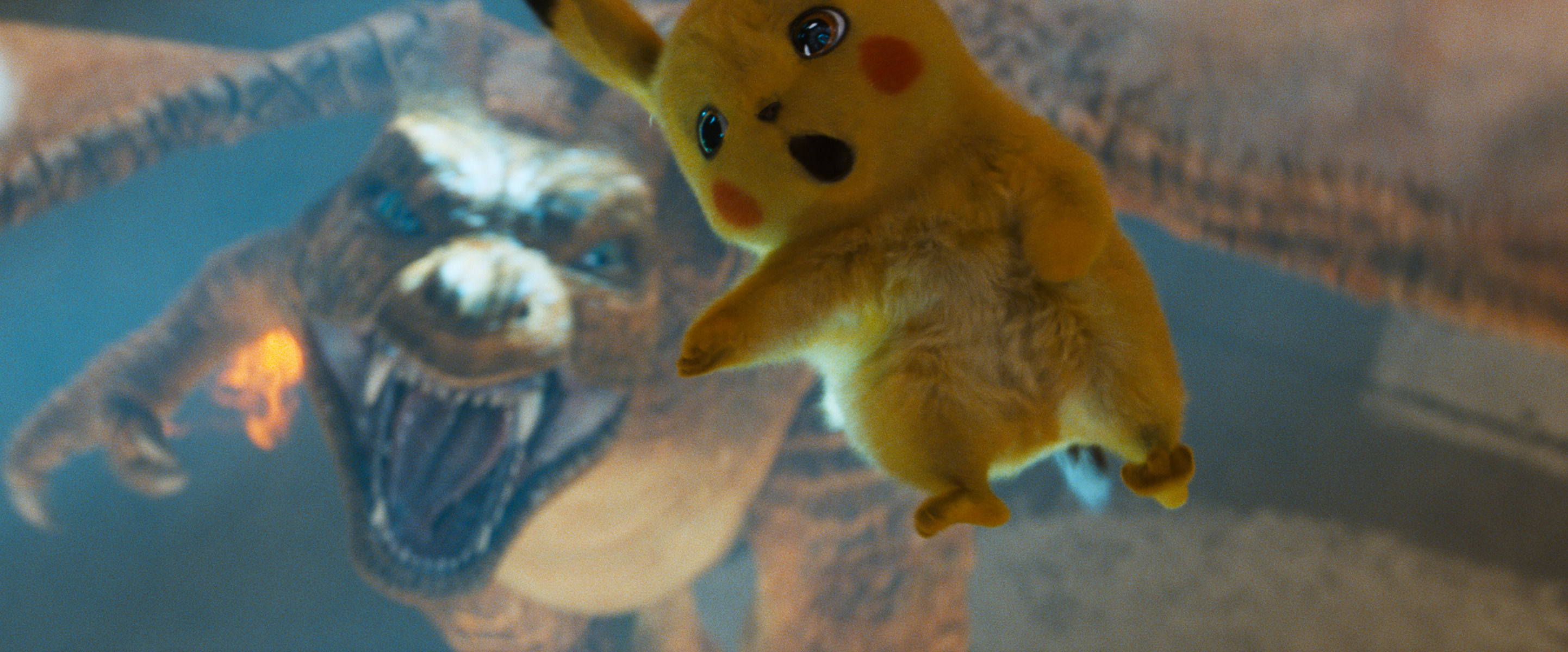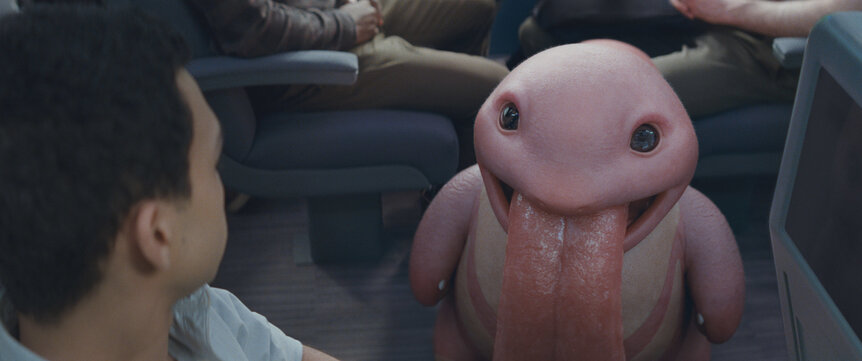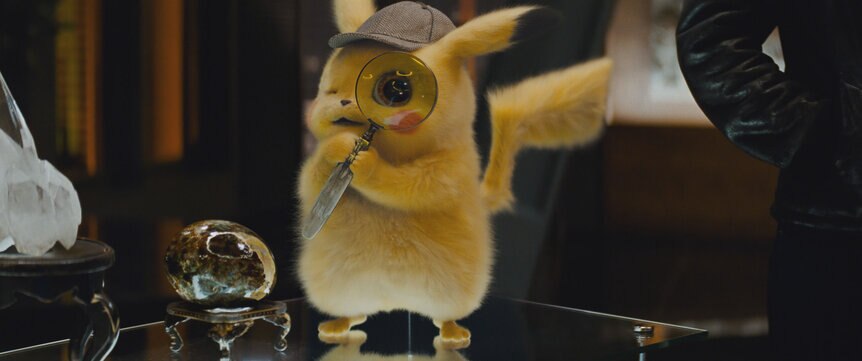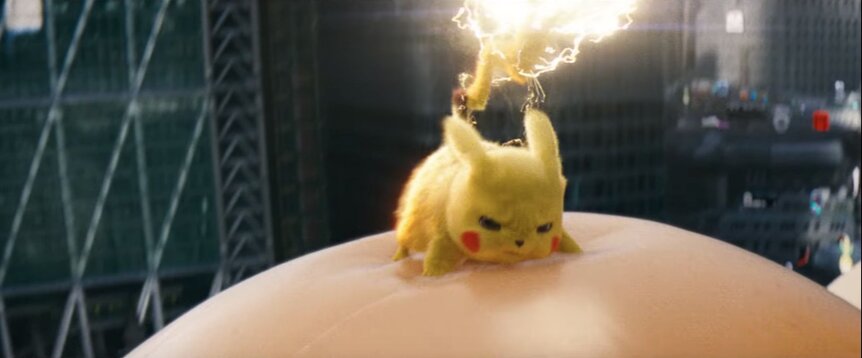Create a free profile to get unlimited access to exclusive videos, sweepstakes, and more!
'Completely horrifying': This Pokémon was Detective Pikachu's biggest design challenge

When you really think about it, Pokémon are kinda scary.
Pikachu is cute, but it's still a one-and-a-half-foot-tall, canary-yellow mouse with electrical currents running through its cheeks. Bulbasaur is a giant frog with a succulent stuck on its back. Lickitung is … Lickitung. Even executives at The Pokémon Company, the minds behind the entire Pokémon franchise, don't know what Mr. Mime is. There's a reason "Pokémon" translates to "Pocket Monsters" in Japanese; fun in anime and game form, unrealistic and unfathomable in the real world.
And so the creators of Pokémon Detective Pikachu, the world's first live-action Pokémon movie, had a particularly hefty challenge ahead of them when considering how to bring these monsters to not-terrifying life.
"Some of them just out of the box were just absolutely wacky and weird," Detective Pikachu VFX supervisor Erik Nordby told SYFY WIRE. "A good example of that is Lickitung. Lickitung is just this massive thing with a massive tongue. I have no idea where it came from, but it exists and we had to make it for the movie. And so the first probably five or six incarnations of that were actually just completely horrifying."
At first, Lickitung had a much larger role in the film but was redesigned and downgraded to mostly a gag character when Nordby and director Rob Letterman showed Pokémon Company executives in Japan their initial designs. "They're like, 'Absolutely under no circumstances will this be in the movie,'" Nordby says, laughing. "And so then we had to pull back and basically just go with something that was extraordinarily basic for that character."
Nordby and Letterman spent a significant amount of time in Japan coordinating with Pokémon Company officials, all of whom were dedicated to what they called the "original setting," meaning each Pokémon's exact look in the games and anime so many fans grew up with.
The hardest fact for Nordby and his team to absorb, he says, was probably the realization that Pokémon who appear to be wearing clothes — Snubbull's dress, Machamp's underwear and belt — aren't actually wearing clothes. That's just their skin.
"Those kind of ideas sort of percolate up in these calls we'd have with Japan. And then we'd hang up and we look at each other like, 'Well, how the hell are we supposed to ... ?'" Nordby says, laughing.
The key to making each Pokémon realistic, they found, was all in the eyes. Every time Nordby and Letterman would present a Pokémon design, the executives would ask them to change the eyes to more closely follow the original setting. The problem was that Nordby and his team found that Pokémon eyes didn't actually function in the real world.
"With the eyeball comes the occipital lobe and the rest of the structure within a skull that has to support that eye," Nordby explains. "And there was just no room for it. The eyeballs themselves would collide inside the head. And not only that, but they didn't have eyelids — they couldn't blink. That was the one thing that Rob would not acquiesce on."
Letterman emphasized the importance of scientific accuracy wherever possible. Pokémon might not be real, but even something as strange as Lickitung was still based on a real animal in Detective Pikachu. Nordby explains that in special effects, creatures are given a sort of skeleton — designers build digital bones and muscular systems to give their subjects "realistic" movement. "And with Lickitung, we started with that process," Nordby says. "We designed a skeleton that kind of worked sort of based on a squished-up hippo."
The problem was the sheer oddity that is Lickitung. "There was just no version of the weight required [that would work], it would just topple over and you would have to spoon-feed it," Nordby says. Another example is Loudred, which Nordby describes as being "60 percent mouth."
Despite the challenges, the Detective Pikachu team still strived for that base of scientific accuracy; they knew viewers would be able to tell something was off without it, even if they couldn't pinpoint exactly what it was. Even various Pokémon's powers were based on real science. Pikachu's lightning powers, from the smallest spark in his cheek to the powerful volt tackle, were developed by studying Tesla coils.
Spending too much time on one detail — obsessing and changing something to the point of going too far — usually ended when they returned to the most basic form. Think of it as the Detective Pikachu creators constantly playing a version of the anime's classic "Who's That Pokémon?" game, in which every Pokémon's characteristic silhouette provided the answer.
"What was very clear is that if we didn't go into this working with them, we would have completely failed," Nordby admits of working hand in hand with The Pokémon Company. "And it was difficult. It was not easy. There were many moments where we would butt heads, but through that sort of combining of the Western idea of how to make a movie with their 20 years of experience and respecting that was the brand and the rest of it — it was extraordinarily necessary."

















